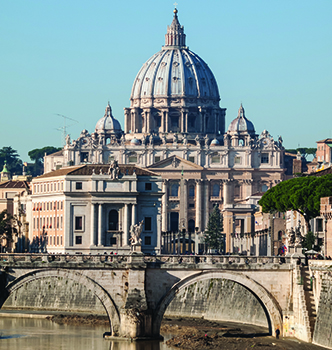Indeed, Rome was not built in a day… Work on St Peter’s began in 1506, but the church wasn’t ready to be consecrated until 1626…
Like many other buildings in Rome, St Peter’s uses stone recycled from the Colosseum.
As is usually the case when a building takes longer to finish that one might have hoped, the main reason it took 120 years to build one church (albeit the world’s largest) basically came down to one thing: money.
There had been a church here since the days of Constantine (this is supposed to be the site of St Peter’s final resting place on Earth) and they needed a new one, but the Basilica we see today wasn’t built because the Roman Catholic Church was awash with cash and needed something to spend it all on, but really rather the opposite.

Rome, and its Church, was not in rude health, and the advent of Protestantism wasn’t helping. The Church needed a statement: a supreme symbol of the Catholic Counter-Reformation. And for that they needed two things: money (for this they sold ‘indulgences’, and enforced some of the harshest taxation Europe has ever known); and stone… Lots of stone.
Now, where might we find lots of stone? That we don’t have to pay for?
St Peter’s is in part built with stone from the Colosseum – a not unusual practice: San Giovanni in Laterano (the actual Cathedral Church of Rome) also owes a debt to Vespasian et al., as does the Palazzo Farnese. And while they were down that way, they also took some arches and columns from the Palatine. We’ll see some more Colosseum stone later in this series, but first, while we’re in the Vatican, let’s go to the Museums!
Open every day from 7:00 to 19:00, April to September, and from 7:00 to 18:00, October to March. Proper dress is required for admission. www.vaticanstate.va. To request a ticket for a Papal Audience, call %+39 06 6988 3114.
